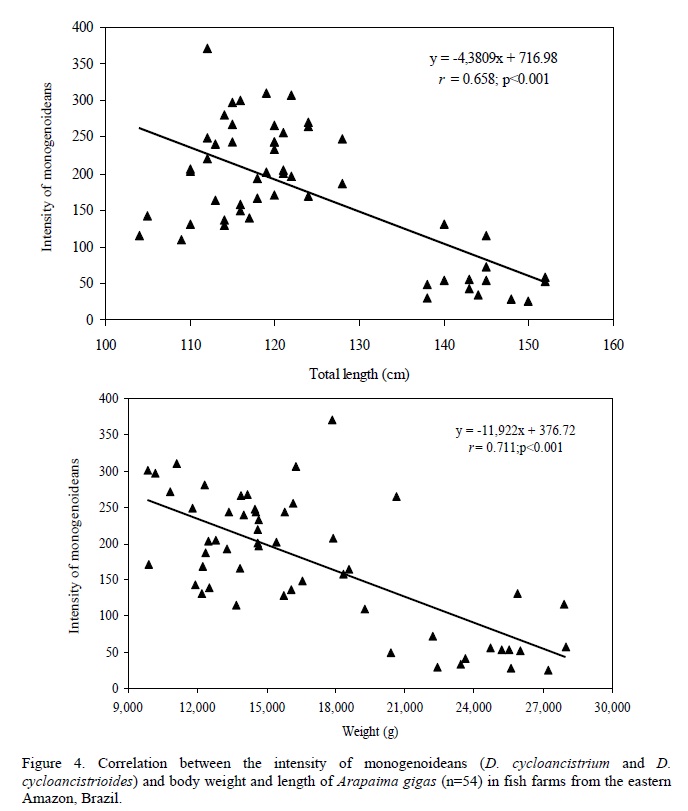The parasitofauna in the giant Amazon basin, pirarucu (Arapaima gigas Schinz, 1822) cultured in fish farms from the state of Amapá, in eastern Amazonia (Brazil) was investigated. Of the 100 examined fish, 90.0% were parasitized by Ichthyophthirius multifiliis (Ciliophora), Dawestrema cycloancistrium, Dawestrema cycloancistrioides (Monogenoidea) and Polyacanthorhynchus macrorhynchus (Acanthocephala), which had an aggregated distribution pattern. The highest infection rates were caused by I. multifiliis and the lowest by P. macrorhynchus. Infection rates were different for each fish farm, due to different water quality and management characteristics. A negative correlation was found between the intensity of monogenoideans D. cycloancistrium and D. cycloancistrioides and the relative condition factor (Kn), but the welfare of fish was not affected by parasitism. The number of I. multifiliis was positively correlated with the weight and total length of hosts, while the intensity of monogenoideans was negatively correlated with body weight and total length. This study is the first to record the occurrence of P. macrorhynchus in A. gigas farmed in Amazon.
Amazonia; fish farm; freshwater fish; parasites; sanity










